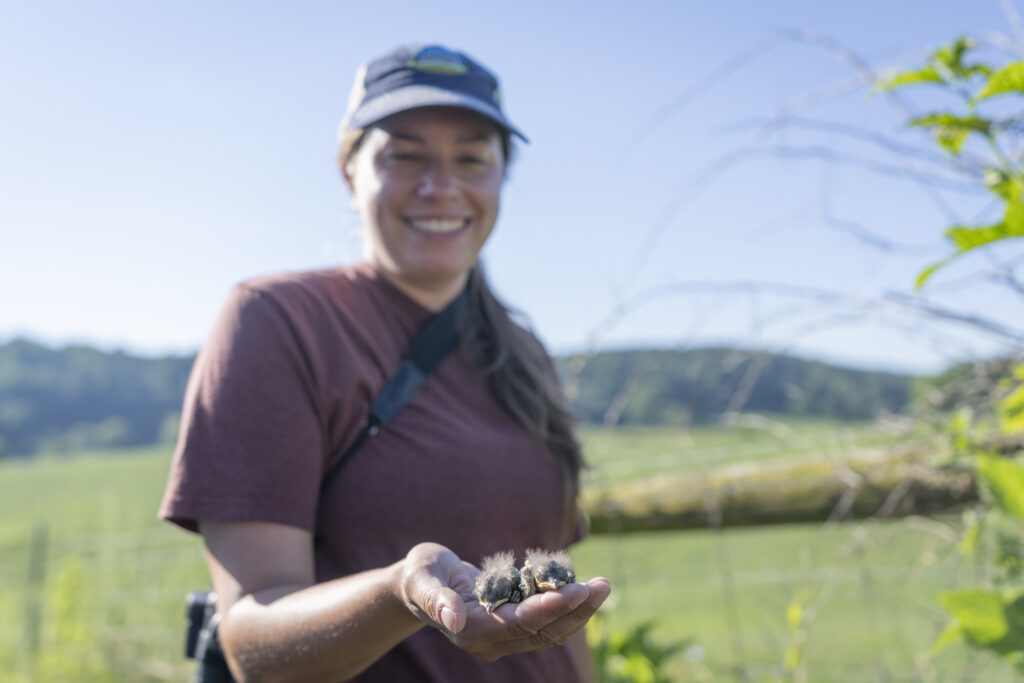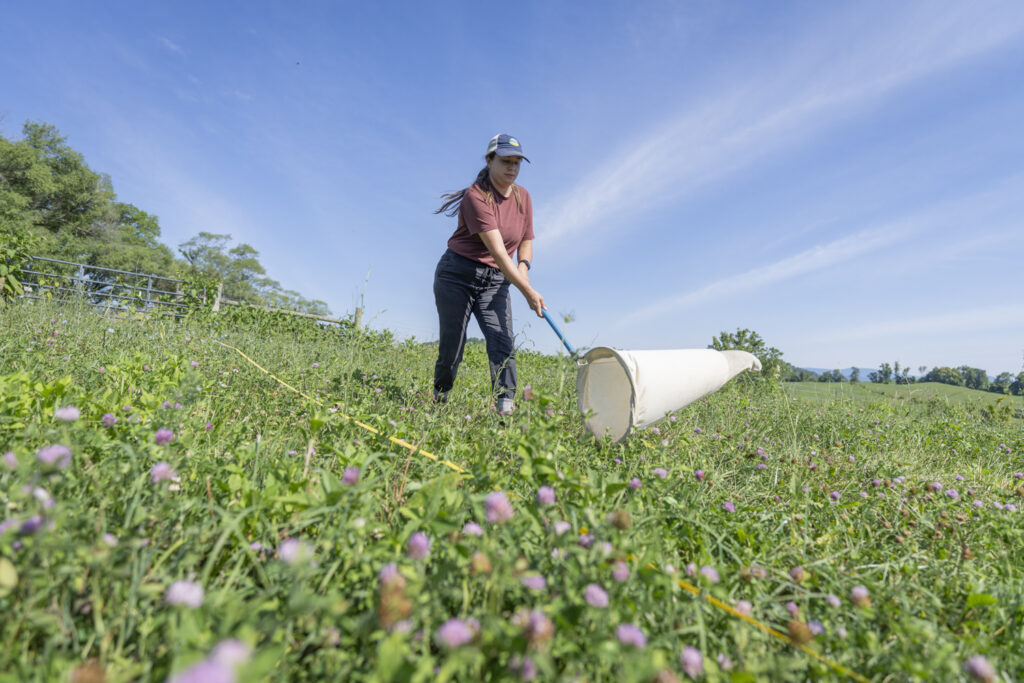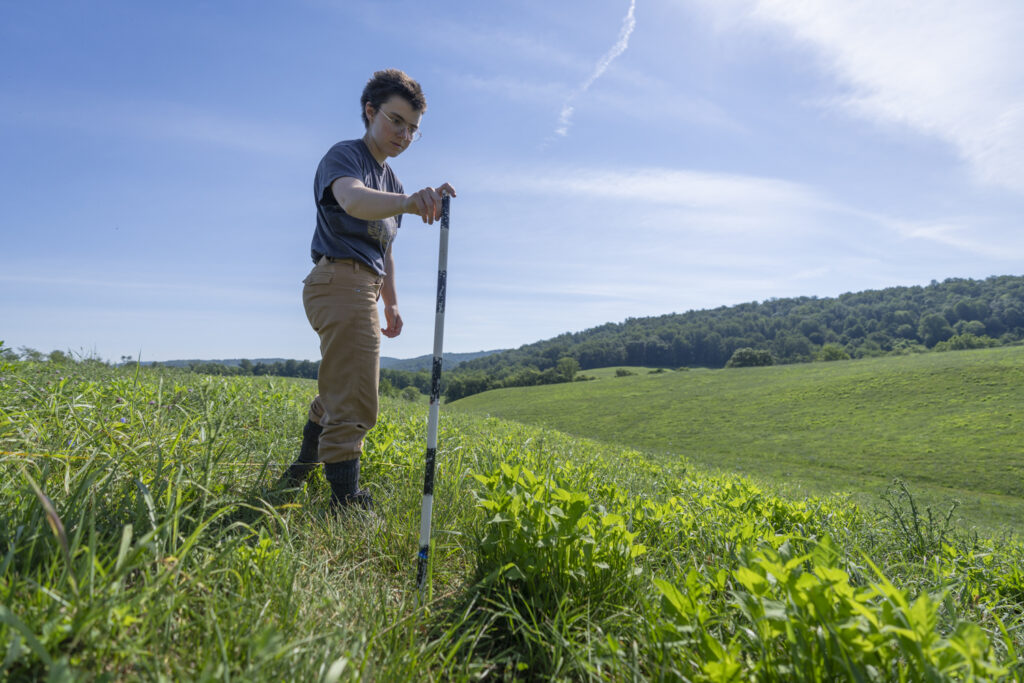Ecosystem Services Provided by Cavity-nesting Birds

Project Objective:
To quantify the extent to which cavity-nesting birds provide ecosystem services through pest control in working landscapes
Description:
This project investigates how cavity-nesting birds in agricultural landscapes contribute to ecosystem services on working lands. Specifically, we aim to understand the mutual benefits of installing nest boxes for both birds and farmers, particularly as a means of controlling agricultural pests.
Led by VWL Research Fellow and University of Maryland graduate student Allison Huysman, our team is collaborating with seven working cattle farms where cavity-nesting bird species—including Eastern Bluebirds (Sialia sialis), Tree Swallows (Tachycineta bicolor), and Barn Owls (Tyto alba)—are utilizing nest boxes. Our research focuses on exploring the role of these birds in pest control by identifying the species consumed by nest-box birds, quantifying pest populations with and without nest boxes, and examining how these interactions vary based on landscape context and farm management practices.
We hypothesize that cavity-nesting birds help reduce pest populations on agricultural lands, and that the effectiveness of this pest control varies depending on the landscape context. To test this hypothesis, we are currently collecting biological samples from the cavity-nesting birds throughout the breeding season to analyze their diets. We are also sampling insect populations on farms with and without nest boxes to compare insect communities under varying intensities of foraging pressure from birds. Our approach includes quantifying pest diversity and abundance using genomic tools in collaboration with the Smithsonian’s Center for Conservation Genomics and analyzing our findings in relation to landscape features and farm management practices.
This research is in collaboration with the University of Maryland Department of Entomology and the Smithsonian’s Center for Conservation Genomics. Funding was generously provided by the Smithsonian’s Life on a Sustainable Planet and the National Fish and Wildlife Foundation.



Source of Funding:
Collaborators:
Project Contact:
- Allison Huysman, Research Fellow (HuysmanA@si.edu)
- Amy Johnson, Program Director (JohnsonAE@si.edu)



SUPPORT VWL
VWL is supported 100% by grants and donations and our work is made possible by the generous contributions from our community.
The Smithsonian Institution is a 501(c)(3). All contributions are tax-deductible.
GET IN TOUCH
Virginia Working Landscapes
Smithsonian’s National Zoo and Conservation Biology Institute
1500 Remount Road, MRC 5537
Front Royal, Virginia 22630
SCBIVWL@si.edu
540-635-0035
